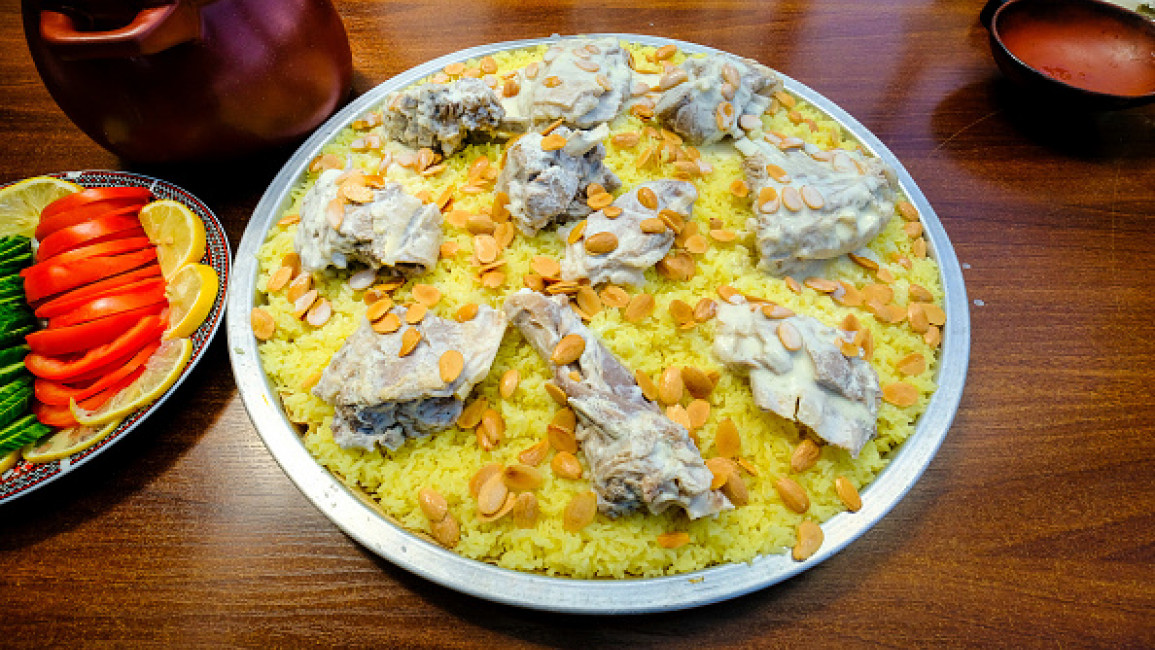Jordanians celebrate Mansaf's recognition on UNESCO's Intangible Cultural Heritage list
Jordanians celebrated the inclusion of Mansaf, its national dish, in UNESCO's Intangible Cultural Heritage list on Wednesday.
Jordan's Minister of Culture Haifa al-Najjar said that the dish's addition to the UNESCO list "represents a global recognition of the cultural value of Jordanian Mansaf."
"Mansaf does not only represent food but is an identity, culture and industry," she added.
Mansaf is a dish composed of stewed lamb, fermented yoghurt, rice cooked in lamb fat and almonds.
The dish hearkens to Jordan's bedouin identity and is often served at family gatherings, as well as ceremonial contexts like weddings and funerals.
"Mansaf is definitely my favourite dish. Everyone needs to try it but it also might not be everyone’s cup of tea. It is a heavy dish," Sara Abdo, a guidance counsellor in Amman, told The New Arab.
"There's something about sitting together, in a circle, sharing the mansaf that makes you feel like you belong to a group. To the host, serving mansaf is a way of showing their generosity," Abdo said.
The dish has assumed a variety of functions in Jordan and has been used in the country's effort to market itself to tourists seeking an authentic Jordanian experience.
It also occupies a socio-political role in a country where tribal alliances still hold strong, especially in the rural south.
"Mansaf is used as a vehicle for transmitting non-verbal messages about reciprocity and alliance among households, extended families and tribes," a group of academics from Jordan’s Yarmouk University wrote in a 2021 paper.
The academics wrote that mansaf has historically been used to show generosity to members of visiting tribes or households.
This historical tradition has been adapted to a modern context by serving the dish to guests visiting one’s home.
Academics also argued that mansaf only began to gain prominence as the country's national dish in the aftermath of the 1967 Arab-Israeli war, when Jordan's current national identity began to take definition.
During the reign of Jordan's previous monarch, King Hussein, promoting bedouin elements of Jordan's history was a key part of the state's production of national identity. This was accelerated after a wave of Palestinian refugees came to Jordan and the country's monarchy turned to its tribal elements for political support.
Non-Jordanian minorities, such as Palestinians and Circassians, would often serve mansaf on special occasions or in ceremonial contexts as a way of signalling that they were part of the "Jordanian family."
The Minister of Culture said that UNESCO's recognition of mansaf also contributes to an awareness of sustainable agricultural practices.
The dish also occupies an important position in the country's economy, where farmers raise livestock specifically for its production.
Mansaf is a particular boon for farmers around the Eid al-Adha holiday when entire sheep are bought for slaughter.


![President Pezeshkian has denounced Israel's attacks on Lebanon [Getty]](/sites/default/files/styles/image_684x385/public/2173482924.jpeg?h=a5f2f23a&itok=q3evVtko)



 Follow the Middle East's top stories in English at The New Arab on Google News
Follow the Middle East's top stories in English at The New Arab on Google News


